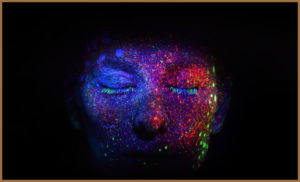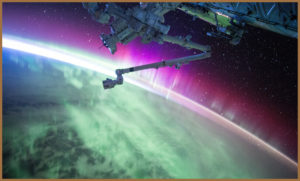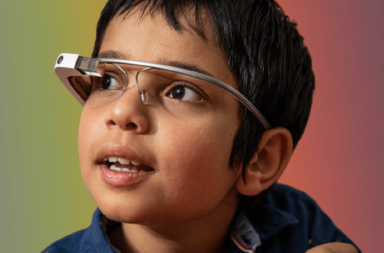It’s 2020, we don’t have flying cars, VR isn’t quite up to scratch and, although we don’t have the monkey butlers we were promised in many a sci-fi, we do now have PETA who would make any prospect of the latter a living nightmare. But, while humanity may not be at the apex of its innovation, the human race as a society has come a long way in recent years, overseeing great progressive in both the theoretical and physical.
These developments are no more evident than in our humble autism community, where discoveries have helped create better diagnostic tools and support for those on the spectrum and, while it sucks that we still don’t have teleporters, shifting attitudes mean that people no longer offer their condolences when I tell them I’m on the spectrum (which isn’t a half-bad consolation).
But how far did autism REALLY come in the 2010s, and what does this mean moving forward?

The Changing Face of Autism:
It’s hard to pin down just how drastic an increase there has been in autistic prevalence since 2010. However, estimates such as those from the Institute of Health Metrics suggest that, as a population, autistic numbers have risen from around 29million to 31million in the last 10 years. This is quite a staggering incline for any condition and, as such, autism has earned the title of ‘fastest-growing developmental disorder’.
According to many an academic, these rising rates of autism can be put down to a shift in our community’s demographics where, although autism numbers continue to increase all over, the largest changes appear to come from Black, Asian and minority ethnic populations, who are reaping the rewards of better health care and more diverse diagnostic criteria.
Similarly, although the average median age of autism diagnosis has not changed over the last 10 years (sitting at around 5), a huge shift in autism criteria which was introduced in the DSM-5 (and is soon to be followed by the ICD-11) has meant that older autists who once slipped through the net, are now less likely to be glossed over – something which is especially true for females.
It seems we are now in a situation where autism is less Rainman and more everyman and, although questions have been raised about how rapidly rates have risen since the DSM-5 (despite it removing an entire category from the spectrum: Rett’s Syndrome), it can be concluded that, for better or worse, the new criteria means an autistic diagnosis is now open to more people than ever: so long as you can handle the ever-growing waiting list which has climbed to as high as 5 years since 2010.

The Birth of Neurodiversity (and the Death of Limited Autistic Expectations):
As representation for neurological conditions (such as ADHD, ADD, Autism and more) continues to grow in the modern world, so too has the concept of viewing these differences as advantageous and not a hindrance.
This mindset has come to be known as ‘Neurodiversity‘ and, while it is actually an older concept than some may think (first being spawned in 1990), it seems that Neurodiversity flourished for the autism community in 2015 – with the advent of Steve Silberman’s book NeuroTribes: The Legacy of Autism and the Future of Neurodiversity.
With more and more people finding their place under the autism umbrella, this is certainly a step forward in changing perceptions; as the philosophies, neurodiversity preaches makes autism seem less like a death sentence – and more a celebration of alternative thinkers with unique sets of skills and challenges.
The birth of Neurodiversity hasn’t been a resounding success though, as the ideology has erupted with infighting amongst the three mindsets prominent within the autism community:
- Those who believe that the autism label is something to wear with pride
- Those who see the positive traits and quirks of autism as a silver lining to the darker days
- Those who simply can’t bring themselves to see past the restrictions which autism may cause
Of course, I’m not here to tell you which side of the debate is right. However, having perspective and accepting that no one is completely correct is the way forward here. It’s not healthy to bog yourself down with over negativity, yet similarly, we shouldn’t restrict ourselves into seeing purely benefit when it means losing sight of that which is needed. In short, sometimes the light at the end of a tunnel is a brighter future, sometimes it’s an oncoming train.

The Future of Autism in the 2020s:
Every year on April 2nd, the autistic community celebrates World Autism Awareness Day. However, in the 2010s many began questioning ‘does the world needs more autism awareness? or is it time to take the next step towards promoting acceptance/understanding of our community?’
It’s a good question and it’s certainly supported by figures such as those from YouGov: which found that 99% of the Western population are aware of the condition (with 44% knowing someone with it), while over in the East 3 in 4 people are aware of autism (a solid 75%). Nevertheless, this doesn’t entirely demonstrate that autism awareness has improved, instead, it shows that autistic awareness has.
What this means is that, while more and more people are capable of describing what an autistic person is like (because they’ve possibility bumped into one of us), few can express just how diverse the condition is. I’m sure I don’t have to explain how damaging clinging to one autism profile can be for our community and so, in 2020, I believe raising awareness of the entire spectrum should continue to be a priority.
So if, by some miracle, humanity reaches the 2030s without blowing itself to smithereens, what would I like to see? Well, it wouldn’t be half bad if we were able to look around and see that autism has come to be viewed as a condition not defined by gender, ethnicity or age. Furthermore, while autism is not a mental health disorder, we shold not lose track of its impact on mental health over the next 10 years (and reduce the alarmingly high suicide figures).
All of this will benefit the autism figures, which will no doubt continue to increase, turning neurodiversity into a concept which no longer promotes what autism can be, but brings out the best of what we already are.

Carry on the Conversation:
What would you like to see the autism community achieve in 2020. Let me know in the comments below. And, if you would like to read more about the rising autism figures, then check out this article: Global Autism Rates Explained: How many people have autism?
As always, I can also be found on Twitter @AutismRevised and via my email: AutisticandUnapologetic@gmail.com.
If you like what you have seen on the site today, then show your support by liking the Autistic & Unapologetic Facebook page. Also, don’t forget to sign up to the Autistic & Unapologetic newsletter (found on the sidebar on laptops and underneath if you are reading this via mobile) where I share weekly updates as well as a fascinating fact I have found throughout the week.
Thank you for reading and I will see you next week for more thoughts from across the spectrum.


